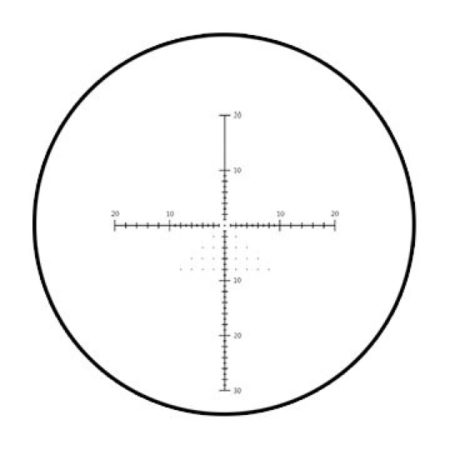New Aztec Emerald First Focal Plane Scope (My New Favorite Scope)
First focal plane scopes….the red-headed step-child of the optical world. I predict that this will soon change. There’s no doubt that second focal plane scopes are outstandingly more popular, more available, and more trusted. I’d say that 99% of the scopes I’ve seen in my lifetime were second focal plane, and I’d bet that is also your experience. First focal plane optics are nothing new. They’ve been around since the dawn of optics itself. In a technical sense, the only difference between a first and second focal plane scope is where the reticle is placed in the chain of lenses. If it is placed in front of the erector tube and behind the objective lens, then it is first focal plane. If it is placed on the back of the erector tube and in front of the ocular lens, then it is second focal plane. So what’s the big deal?
If one is using a fixed power scope, then it makes almost no difference where the reticle is in the lens chain. Some say that the first focal plane design is more robust and durable than second focal plane, but that would be just about the only difference in a fixed power scope. Where it really matters is in a variable power scope. As you probably know, when you change magnification with a second focal plane design…only the image changes size. The size of the reticle stays fixed. This is not the case with a first focal plane design. When you change magnification on a first focal plane scope, both the image and the reticle zoom at precisely the same rate.
So what does this mean to you? Well, it means that your hold-over points stay exactly the same no matter what magnification you choose in a first focal plane scope. That is a HUGE deal! As you might have guessed (or know already) your hold-over points will change dramatically if you change magnification on a second focal plane scope. To be able to quickly utilize exact hold-over points on a second focal plane design, you would have to memorize all of your different hold-overs for every magnification on your scope…or at least write them all down. That is a Herculean task, to say the least. Thus, this is the greatest advantage of the first focal plane design. You have one set of hold-over points that stay exactly the same no matter what magnification you choose. As someone who utilizes different magnifications while hunting, I absolutely LOVE this about the first focal plane scopes…but I’ve never found a first focal plane scope that I love….until now.
This brings us to the new Aztec Emerald First Focal Plane 5.5-25x50mm Illuminated Reticle scope…a.k.a. my new favorite scope. The Emerald has been available for quite some time in the second focal plane version. It comes in both a 3-18x50mm Second Focal Plane and 5.5-25x50mm Second Focal Plane version. I have always really liked this scope, and especially the reticle. It’s a GREAT scope that I’ve used extensively, but never on my own rifles. You see, an illuminated reticle is an absolute must have for me, and that is one area where the second focal plane Emerald falls short. There is no illumination in the second focal plane version as of the writing of this blog. This has been changed for the first focal plane version, and I’m ecstatic that this change occurred. What’s even better is the first focal plane optics with that delicious Emerald reticle.

Rather than try to explain to you all of the awesomeness of the new Aztec Emerald First Focal Plane scope in this blog, I have made you a video. You can see my full review video of the first focal plane Emerald below. I have barely touched on the specifics of the scope here, so for the full story…I suggest you watch the video. Believe it or not, I’m using the FFP (first focal plane) Emerald on my field target rifle! You can find my explanation and justification for this in the vid. I hope this blog helps to shed a little light on what a FFP scope is, how it works, and why it’s advantageous….but the real illustration is in the video.

Donnie Reed is our Sales Manager and general airgun guru here at Baker Airguns. He was a member of the U.S. Marine Corps, and qualified as both a Rifle Expert and Pistol Expert. Donnie is now a competitive airgun shooter, focusing primarily on field target and benchrest competitions. He has won both PCP and piston class field target matches, as well as local benchrest competitions. Donnie also runs the Youtube channel and Facebook group ALL THINGS AIRGUN. His first college degree is in Mathematics and Sciences, but he is still pursuing another in Physics and Astronomy.

